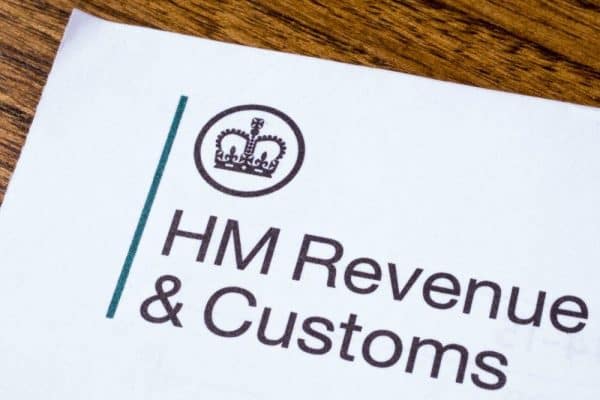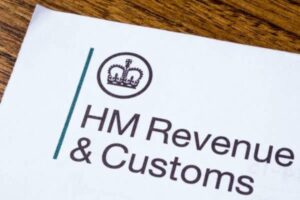There has been lots in the press recently about the changes to IR35, also known as the off-payroll
working rules, and although IR35 in itself is nothing new and has always been applicable to
contractors, the new rules coming into force in April 2021 will now affect many freelancers.
IR35 originally came in as anti-avoidance legislation back in April 2000 and was used to counter the
avoidance of tax and NIC for individuals providing their own services via a Personal Services
Company, known as a PSC, which is simply a limited company used for the purpose of providing
individual personal services.
Ultimately IR35 is used to determine the relationship between the end client and the worker to
determine if there is actually an ‘employer’ and ‘employee’ relationship, and therefore if the PSC
wasn’t there, would the worker be employed or self-employed? It is each contract and ‘hypothetical
relationship’ that is reviewed for IR35 purposes and not the company in its entirety, and it can apply
to any contract, whether written or not.
Currently a PSC is responsible for determining whether IR35 applies and if it is applicable, the PSC is
then responsible for applying PAYE tax and NIC on the applicable contract. If it is deemed to apply,
this would then negate the ability and benefit of utilising a low salary and high dividend
remuneration arrangement.
However, HMRC have estimated that only a small percentage (10%) of PSCs have applied IR35
properly, hence their need to get this right now.
What’s new and who is affected?
From 6 April 2021 the responsibility for making IR35 decisions will now be put on the end-client,
rather than the PSC providing the worker, and now applies to all private sector organisations, unless
the end client is deemed as small. A small business would therefore be excluded and is one that
meets two or more of the following conditions;
- Has less than £10.2m in turnover per year
- Has balance sheet assets before liabilities less than £5.1m
- Has 50 employees or less
If the business is small, the existing rules will continue to apply.
It is worth noting that it applies to work related to the period after 6 April 2021, and it is important
to note that ultimately the legislation hasn’t changed, it is only the obligation and responsibility that
has. PSCs working for a small business should still be reviewing their IR35 status on an ongoing basis.
Fundamentally the new rules state that if the end client determines that IR35 is applicable, it will be
their obligation to apply PAYE and NIC as if the worker is employed by them, rather than by the PSC
(the company providing the worker). Most of the time the ‘end client’ is the ‘fee-payer’ and thus has
the responsibility, but in some cases an agency could be involved and could be the ‘fee-payer’ and so
they would be required to follow the IR35 procedures also. It is the ultimate responsibility of the fee-
payer (ie whoever pays the worker), to apply the PAYE and NIC and run the payroll. It would then
mean that the payments made under the terms of the contract would be subject to PAYE and NIC
like any other ordinary employment calculation. This means that the worker will get payslips, a P45
and P60 in the same way as if they were an employee, but VAT, if applicable, would still continue to
be charged as normal as the contract remains within the PSC. It is possible to claim some small
amounts of expenses against the employment income personally provided they are incurred wholly,
exclusively and necessarily for the purpose of the employment and would have been contractually
required under an equivalent employment contract, but we are not covering this in detail here. The
PSC would invoice in the same way as they would a non IR35 contract and the fee-payer would take
into account the VAT and apply PAYE and NIC, paying the net difference to the PSC.
Although the above does not seem to differ much to an employment arrangement, it is very
important to note that the employment rights and contract terms that would usually apply to an
employment, do not apply where IR35 is in place. This means no benefits, employment rights or
pension entitlements, and thus no employment contract, so this is definitely not favourable for the
worker. As a worker caught by IR35, there would be increased PAYE tax and Employees NIC
deducted from the full rate of pay. Compared to their previous arrangement they would be paying
far more tax and NIC now and thus have much less cash in the pocket, as the PSC may no longer be
able to reap any commercial benefit or any tax advantages from being a limited company. It may
therefore be necessary to re-negotiate a higher rate and/or revised working terms and businesses
are realising this may be necessary to keep key workers engaged and on side.
It is worth noting that a worker with an outstanding student loan will not have their deductions
made in the usual way as would be the case under employment. It may well therefore come as a
great shock when the Tax Return is prepared and a large student loan repayment is required so we
recommend making allowances for this personally by putting some savings aside or setting up a
monthly repayment directly to the Student Loans Company covering the period.
In order to test whether IR35 applies, there is a normal employment status test that can be applied
to the ‘hypothetical relationship’. This is ‘if the intermediate company or companies did not exist,
would the relationship between the end client and the worker be that of employer and employee?’
A decision must be made based on the balance of probability and that can be defined by 5 test
categories;
- Control – What, where, when, how and why? Alongside personal service, this is probably the most important aspect to consider. What are the terms? What are the hours and rates of pay and who decides? (hourly, daily or project based). Where is the place of work? Who chooses the terms? What is the framework of the contract and the task involved? Is there is statement of work in place? Are you expected to take on ad-hoc tasks outside of your contracted tasks?
- Personal Service – Who? This is also as important as control. Is there a right of substitution? ie can you send someone else in to do your job, at your discretion and decide who and what you pay? Is this applicable in practice or just written in the contract? Are there arduous restrictions in place? ie the need for an interview of the substitute by the end client.
- Mutuality of Obligations – Is there exclusivity in place? Do you have any other clients? Can you decide your terms? What is the relationship?
- Integration – Do you look and act like an employee? Do you have your own desk, provide your own tools, have a name badge, are seen on the client phone list or website? Are you doing the same as other employees? Can I use the staff canteen or gym?
- Economic Reality – Are you really in business? Who provides the tools? Do you have capacity to make both profits and losses depending on the decisions you make? Do you have other clients and can you freely choose who to work with and when? Are you insured as a business? Is there an element of risk?
Each of the above tests are made up of multiple questions and it is important to consider each
question on the balance of probability. None of these tests are exclusive and some will conflict, and
this is typical. The legislation is complex and lengthy. These questions are used to determine what
the status is for tax purposes and therefore whether the worker should be ‘self-employed’ and thus will have a Contract for Services or ‘employed’ and need a Contract of Service. This may well give rise to some subjectivity, but it is important to look at the facts and not just what is written on paper.
HMRC have provided a tool called CEST – Check Employment Status for Tax which is an online questionnaire, and this will enable a worker, agency or the end client or organisation to work through a series of questions to help them come to a decision. Unfortunately, this is still not cut and dry, or completely accurate, or exact.
One of the key deficiencies of the CEST tool is that it does not factor in ‘Mutuality of Obligation’
(MoO). Mutuality of Obligation is one of the defining characteristics of employment, in that the
employee has certain obligations towards the employer, and vice versa. Many of these obligations
do not apply to contractors (e.g. the contractor can choose where and how to deliver the work, and
can delegate it to an associate if necessary; while the client is not obliged to offer the contractor
more work). MoO has been a decisive factor in a number of recent IR35 tribunals, which is another
reason why the CEST tool is still only a rough guide.
For more detailed information, you can find out more within HMRC’s Employment Status Manual.
In order to determine the status of a worker, the end client must make a Status Determination
Statement (SDS), which can just be a letter setting out whether they think a worker is or is not liable
for IR35, and this must be issued to the worker or the agency paying the PSC if there is one, which
must then be passed on to the PSC. It must give the reason, and reasonable care must be taken in
applying the test, otherwise it may not be valid. This is to avoid firms taking a ‘blanket’ decision and
thus making the SDS not valid. The worker can disagree and ask for it to be reviewed within 45 days
and the end client must provide reasons for the conclusion.
Fears that the changes to IR35 will spell the death of freelancing are exaggerated. By taking the
appropriate steps, both contractors and businesses can ensure that they do not fall foul of IR35.
Remember, IR35 is something that applies to a role, rather than an individual. So just because you
were outside it on your last assignment, doesn’t mean that you won’t be inside it on your next one.
For every assignment that you take on as a contractor, the most important thing is to be able to
show that you are ‘in business on your own account’ and therefore not an employee.
Tips for proving you are ‘in business on your own account’
If you are a contractor operating through a limited company (either your own or an umbrella
company), HMRC may ask for evidence that you are genuinely freelance, and not just an employee
of your client. Here are some ways that you could make your case.
1. Highlight the ways your work situation differs from employees’
Genuine employees will have certain set working conditions, such as minimum hours, pension
arrangements and other benefits, and perhaps subsidised services too. The employer also has a duty
to provide work for them, which the employee has an obligation to do – and the employer can
stipulate where and how the work is to be carried out. You should be able to show that little if any of
this applies to you.
2. Keep client correspondence
If you have emails that clearly state you are not under the control of a manager at the business, but
are simply contracted to provide a service, this can be useful too.
3. Don’t name your company after yourself
HMRC knows that a company named after a person may well be just that person, and this fits their
profile of a PSC. But if your company has a more ‘business-like’ name, e.g. XYZ Design, it emphasises
the fact that your company is distinct from you, and that you could delegate the work to another
person if necessary. Employees cannot delegate in this way, so it marks you out as different.
4. Have your own marketing materials
You should be able to demonstrate that you market your contracting services actively. Have a listing
on relevant services website, post adverts and print business cards, all of which help to indicate that
you are in business on your own account. Never use a business card which includes your client’s
branding!
5. Maintain your own office
A well-equipped office, even just in your own home, will strongly imply that your work activities
extend well beyond your current client. If you also invest in your own software licences, trade
literature and professional memberships, this can help a great deal too.
6. Take out your own business insurance
Having your own business insurance, such as professional indemnity insurance, is a great way of
demonstrating that you’re not just an employee.
7. Invest in your professional development
Employees don’t pay for their own training, so if you pay for yours this will be another useful point
of difference. Some professions may require you to take continued professional development (CPD)
to remain qualified, so by paying for this you’re also reasserting your contractor status.
8. Try to have multiple clients at the same time
It’s not always possible to arrange, but if your time is split fairly evenly between two or more main
clients, it’s much harder for HMRC to claim you’re an employee of any of them. However, having a
very uneven split (e.g. 90 per cent of your income deriving from one client) may be less convincing.
The more of these strands of evidence you can call upon, the more likely it is that HMRC will accept
you are in business on your own account. Having just one or two on their own may not be enough.
IR35 tips for businesses hiring contractors
If your business hires contractors, either from time to time or on an ongoing basis, then you should
review your relationships with them to ensure they don’t fall inside IR35.
From April 2021 it is your responsibility to determine whether a worker is an employee or a
contractor for tax purposes. You will have to issue a Status Determination Statement to your
contractors, which makes their IR35 status clear (inside or outside the rules) and explains why. As
long as you support your decision with sufficient evidence and file the appropriate tax documents,
you should avoid any penalties.
In summary, you should:
1. Review all your relationships with contractors and/or consultants
2. Make sure your terms of engagement are clear and accurate
3. Provide contractors with their Status Determination Statement
4. Consider changing some contractors into employees if they fall within IR35 and if this is a more
practical solution for you both.
In Summary
The new IR35 rules will affect a lot of people and place a lot of burden on to businesses. In some
instances, employment contracts will be offered to ex-contractors and this would be more
favourable to most than falling into the pitfalls of IR35. However, very often the end-client may be
open to negotiation and a review of contract terms to minimise the impact. In all instances, we
recommend you take professional advice



